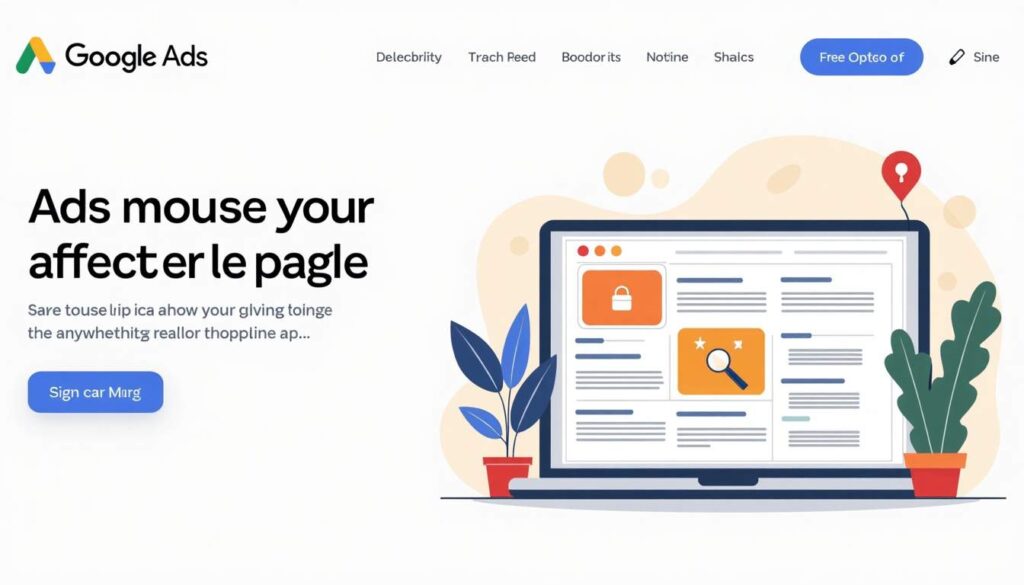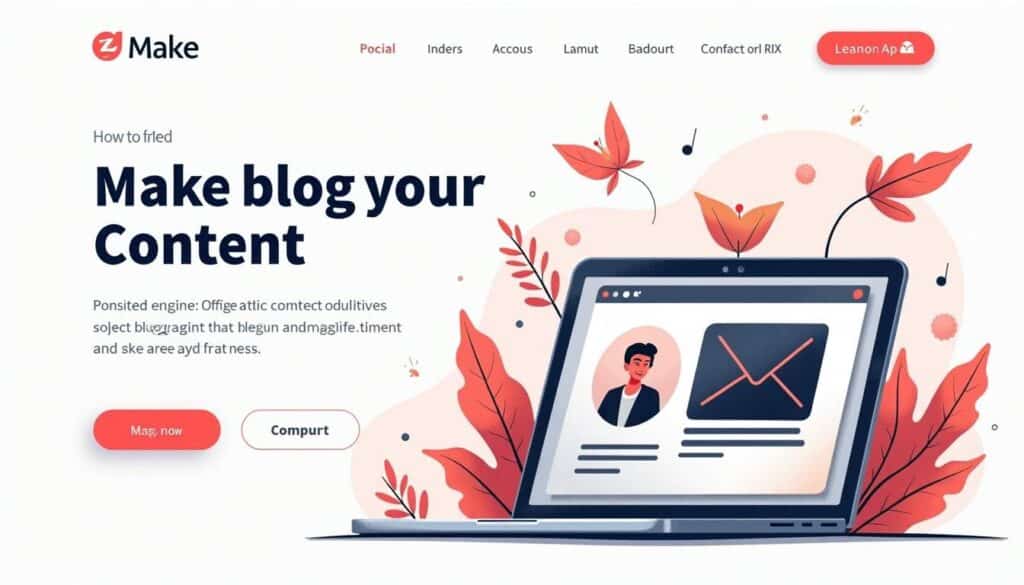Table of Contents
- Why Landing Page Design Matters for Google Ads
- Speed Is a Dealbreaker: Optimize Load Times
- Crafting Compelling, Personalized Calls to Action
- Keep It Simple: Limit Links and Distractions
- Build Trust with Testimonials and Social Proof
- Mobile-Friendly Design Is Non-Negotiable
- Use Dynamic Content to Increase Relevance
- Final Thoughts: Test, Analyze, and Iterate
Creating landing pages that convert well is both an art and a science, especially when it comes to Google Ads. With millions of businesses competing for attention, your landing page needs to do more than just look good—it must engage visitors instantly, build trust, and guide them smoothly toward taking action. In this article, we’ll explore proven strategies to design Google Ads landing pages that boost conversions and maximize your advertising ROI.
Why Landing Page Design Matters for Google Ads
When someone clicks on your Google Ad, they expect a seamless, relevant experience that answers their query quickly. If your landing page doesn’t deliver, visitors bounce—and your ad spend goes to waste. The average conversion rate for Google Ads on the search network hovers around 4.4%, which means there’s plenty of room for improvement for most advertisers.

One of the most effective ways to improve conversion rates is through dynamic landing pages that tailor content based on the visitor’s search intent or demographics. Businesses using Google Ads dynamic landing pages report average conversion rate improvements of 47.3%, with some industries seeing gains as high as 89%. This highlights how personalization and relevance can dramatically impact results.
Moreover, the design elements of a landing page play a crucial role in capturing and retaining visitor attention. Key aspects such as color schemes, typography, and layout can influence how users perceive your brand and its offerings. For instance, a well-structured landing page with clear calls-to-action and engaging visuals can guide visitors toward taking the desired action, whether that’s signing up for a newsletter, making a purchase, or requesting more information. A/B testing different design elements can provide valuable insights into what resonates best with your audience, allowing for continuous optimization.
Additionally, the loading speed of your landing page cannot be overlooked. Studies show that even a one-second delay in page load time can lead to a significant drop in conversions—up to 20%. In an era where users expect instant gratification, ensuring your landing page loads quickly is essential. This can be achieved by optimizing images, minimizing code, and leveraging browser caching. By prioritizing speed alongside design, you create a more efficient and satisfying user experience that encourages visitors to stay and engage with your content.
Speed Is a Dealbreaker: Optimize Load Times
Nothing kills conversions faster than a slow-loading landing page. Research shows that 78% of landing pages load in 5 seconds or less, but every additional second of load time reduces conversion rates by 4.42%. Even more striking, a 1-second delay can decrease conversions by up to 7%. These stats underscore the critical importance of fast page performance.
To keep visitors engaged, optimize your landing page by compressing images, minimizing scripts, and leveraging browser caching. Mobile users, who make up a large portion of Google Ads traffic, are especially sensitive to load speed, so prioritize mobile-friendly design and fast loading on all devices.
In addition to these strategies, consider implementing a Content Delivery Network (CDN) to distribute your content across various geographical locations. This can significantly reduce latency and improve load times for users who are far from your server. Furthermore, utilizing lazy loading techniques can be beneficial; this means that images and videos are only loaded when they come into the viewport, which can drastically cut down on initial load time and enhance the user experience. Regularly testing your page speed with tools like Google PageSpeed Insights can also provide valuable insights into where improvements can be made.
Another important aspect to consider is the impact of third-party scripts, such as social media widgets or analytics trackers, which can often slow down your page. Evaluate the necessity of each script and remove any that do not contribute significantly to your goals. By streamlining these elements, you not only improve load times but also enhance the overall performance of your landing page. Remember, a seamless experience is key to retaining visitors and driving conversions, so every millisecond counts in the competitive online landscape.
Crafting Compelling, Personalized Calls to Action
Your call to action (CTA) is the gateway to conversions. Generic CTAs like “Submit” or “Click Here” simply don’t cut it anymore. Personalized CTAs tailored to the visitor’s needs and stage in the buying journey perform 202% better than generic ones. This means using language that speaks directly to the user’s intent, such as “Get Your Free Quote” or “Start Your Trial Today.” By understanding the specific pain points and desires of your audience, you can create CTAs that resonate deeply, making them feel understood and valued. For instance, if you are targeting small business owners, a CTA like “Unlock Your Business Potential with Our Free Consultation” can be much more effective than a standard prompt.
Position your CTA prominently above the fold and repeat it in strategic locations throughout the page. Use contrasting colors and clear, action-oriented text to make the CTA stand out. Remember, the easier and more compelling you make it for visitors to take action, the higher your conversion rates will be. Additionally, consider the use of urgency and exclusivity in your CTAs. Phrases like “Limited Time Offer” or “Join Our Exclusive Community” can create a sense of urgency and encourage immediate action. Incorporating social proof, such as testimonials or user statistics, alongside your CTAs can also enhance their effectiveness, as potential customers are more likely to engage when they see that others have successfully benefited from your offerings.
Keep It Simple: Limit Links and Distractions
When designing a landing page, less is often more. Too many links can distract visitors from the main goal. Interestingly, pages with only one link have a conversion rate of about 13.5%, while those with five or more links see that rate drop to around 10.5%. This suggests that limiting navigation options helps keep visitors focused on the conversion path.
Remove unnecessary menus, sidebars, and outbound links that might lead visitors away from your intended action. Instead, create a clean, focused layout that guides users naturally toward your CTA. This streamlined approach reduces decision fatigue and increases the likelihood of conversion.
In addition to limiting links, consider the visual hierarchy of your landing page. Use contrasting colors and strategic placement to draw attention to the most important elements, such as your call-to-action button. By making it visually prominent, you can guide users’ eyes to where you want them to click. Furthermore, incorporating whitespace effectively can enhance readability and create a sense of calm, allowing visitors to absorb information without feeling overwhelmed.
Another important aspect to consider is the use of compelling and concise copy. Each word on your landing page should serve a purpose, whether it’s to inform, persuade, or evoke emotion. By crafting a clear message that resonates with your target audience, you can further minimize distractions and keep visitors engaged. Engaging headlines, bullet points, and impactful testimonials can reinforce your message and build trust, making your landing page not just simple, but also persuasive and effective.
Build Trust with Testimonials and Social Proof
Trust is a huge factor in convincing visitors to convert. Including testimonials on your landing page can significantly boost credibility and confidence. In fact, 36% of top-performing landing pages include testimonials, which help humanize your brand and provide social proof that others have had positive experiences.
Use authentic quotes, photos, or even video testimonials from satisfied customers. Highlight specific benefits or outcomes your customers have achieved. When visitors see real people endorsing your product or service, they’re more likely to take the leap and convert.
Moreover, consider integrating case studies alongside testimonials to provide a more in-depth look at how your product or service has made a tangible difference in your customers’ lives. Case studies can illustrate the journey of a customer, detailing the challenges they faced before using your offering and the measurable results they achieved afterward. This narrative approach not only builds trust but also allows potential customers to envision their own success story with your brand.
Additionally, leveraging social media mentions and user-generated content can further enhance your credibility. When potential customers see their peers discussing and recommending your product on platforms like Instagram or Twitter, it reinforces the idea that your offering is widely accepted and valued. Encourage your customers to share their experiences online, and consider creating a dedicated section on your website to showcase these social media posts. This not only enriches your content but also fosters a sense of community around your brand, making it more relatable and trustworthy.
Mobile-Friendly Design Is Non-Negotiable
With more people searching and shopping on mobile devices, having a mobile-friendly landing page is essential. A whopping 86% of top-performing landing pages are optimized for mobile, ensuring a smooth experience regardless of screen size. This shift in user behavior highlights the importance of adapting to the preferences of your audience, as failure to do so can lead to significant drops in engagement and sales.
Responsive design, fast load times, and easy-to-tap buttons are key elements to focus on. Test your landing page on multiple devices and browsers to catch any usability issues. If your page isn’t mobile-friendly, you risk losing a large chunk of potential conversions. Furthermore, consider the impact of mobile-first indexing by search engines; Google prioritizes mobile-optimized sites in its search results, making it even more critical to ensure your landing page meets mobile standards.
Additionally, incorporating features such as touch-friendly navigation and streamlined content can enhance the user experience on mobile devices. Users appreciate quick access to information, so consider using collapsible menus and concise text to keep your landing page uncluttered. Engaging visuals that adapt to different screen sizes can also capture attention without overwhelming the user, making your page not only functional but visually appealing. By investing in a mobile-friendly design, you’re not just improving usability; you’re also building trust with your audience, which can lead to increased brand loyalty and repeat visits.
Use Dynamic Content to Increase Relevance
Dynamic landing pages adjust content based on user behavior or ad parameters, making the experience more relevant and personalized. This can include changing headlines, images, or offers to match the visitor’s search query or location.

By aligning your landing page content closely with the ad copy and user intent, you reduce friction and increase engagement. This tailored approach is a major driver behind the nearly 50% average conversion rate improvement seen with dynamic landing pages.
Furthermore, the use of dynamic content can significantly enhance user experience by providing visitors with information that resonates with their specific needs and preferences. For instance, if a user arrives at a landing page after searching for eco-friendly products, the page can instantly showcase sustainable options, testimonials from satisfied customers, and relevant blog posts that highlight the benefits of choosing environmentally conscious items. This not only captures the user’s interest but also builds trust, as they see that the brand understands and addresses their values.
Additionally, incorporating dynamic elements such as countdown timers for limited-time offers or personalized recommendations based on previous browsing history can create a sense of urgency and encourage immediate action. These features not only make the landing page more interactive but also foster a deeper connection with the audience, as they feel that the content is specifically curated for them. As a result, businesses can leverage these insights to optimize their marketing strategies and ultimately drive higher conversions and customer loyalty.
Final Thoughts: Test, Analyze, and Iterate
Designing high-converting Google Ads landing pages is an ongoing process. What works for one campaign or audience might not work for another. That’s why continuous testing—A/B testing headlines, CTAs, layouts, and images—is crucial to optimize performance.

Use analytics tools to monitor bounce rates, conversion rates, and user behavior on your landing pages. Pay attention to metrics like load time and mobile usability, and make data-driven decisions to refine your pages. Over time, these small improvements can add up to significant gains in conversion and ROI.
Remember, a well-designed landing page is your best chance to turn clicks into customers. Focus on speed, relevance, trust, and simplicity to create landing pages that truly convert.
In addition to A/B testing, consider implementing multivariate testing to assess how different elements interact with one another. This method allows you to test multiple variables simultaneously, providing deeper insights into which combinations yield the best results. For instance, you might find that a particular image works better with a specific headline, leading to a more engaging user experience. By understanding these interactions, you can create a more cohesive and compelling landing page that resonates with your audience.
Furthermore, don’t underestimate the power of customer feedback. Incorporating surveys or feedback forms can provide invaluable insights into what your visitors are looking for and what might be causing them to leave without converting. Engaging with your audience in this way not only helps in refining your landing page but also builds trust and rapport, making them more likely to return in the future. By actively seeking out and responding to user input, you can foster a more user-centered approach to your landing page design, ultimately enhancing its effectiveness.



